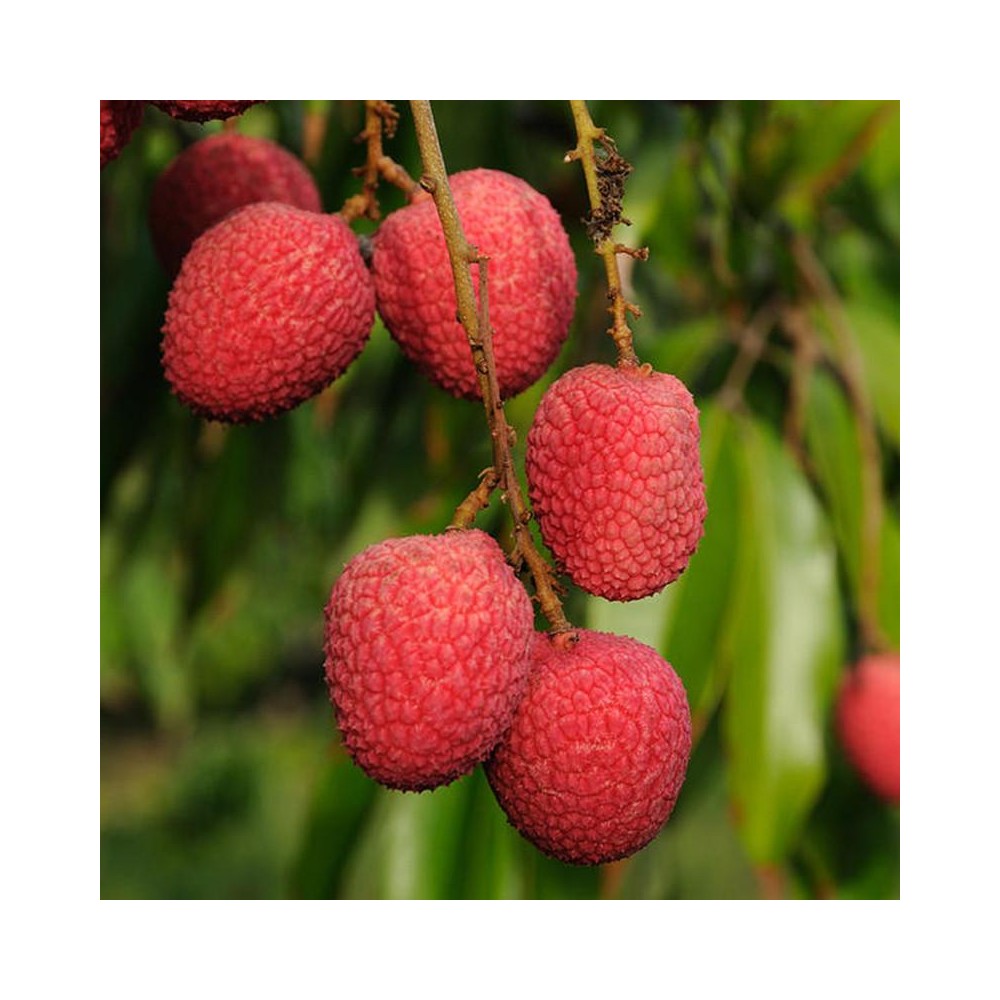



Lychee trees (Litchi chinensis) bring special interest to your home landscape, both with their ornamental beauty and their production of edible fruit. With a typical height and spread of around 30 feet, spring fruiting and yellow flowers and bronze-hued leaves, this tree is a showstopper. However, ensuring that your lychee tree performs up to its potential means providing it the special care it needs for healthy development
.

Security policy visit http://nurserynature.com/content/10-security-policy

Shipping & Delivery Policy visit http://nurserynature.com/content/1-delivery

Cancellation & Refund Policy visit http://nurserynature.com/content/6-aeu-legal-revocation-terms
Lychee trees (Litchi chinensis) bring special interest to your home landscape, both with their ornamental beauty and their production of edible fruit. With a typical height and spread of around 30 feet, spring fruiting and yellow flowers and bronze-hued leaves, this tree is a showstopper. However, ensuring that your lychee tree performs up to its potential means providing it the special care it needs for healthy development
.
Lychee Planting & Care
Cultural Requirement
Providing trees with special care is effective only if the plant is already growing in optimal conditions. Lychee trees grow best in areas of the home garden that offer full sunlight, which is particularly significant for healthy flowering and fruit growth. These evergreens thrive in most soil types, provided that soil is moist and well-drained. The ideal pH range is 5.0 to 7.5, as alkalinity may result in an iron deficiency. Lychee trees grow most successfully in U.S. Department of Agriculture plant hardiness zones 10a through 11.
Lychee trees are water lovers and should be irrigated regularly. However, avoid creating waterlogged conditions, which may result in diminished health or root rot. Irrigation for this shallow-rooted tree should occur when soil feels dry to the touch. However, ceasing watering approximately six weeks prior to flowering helps promote fruiting, according to the University of California Cooperative Extension. To maintain the high fertility lychees need, fertilizer, such as 10-5-20, should be applied after harvest. An additional application is suitable after fruit set, suggests the University of Hawaii at Manoa.
Pruning and thinning of the lychee tree is necessary for strong structure and to prevent wind damage, as its dense growth makes it susceptible to falling from powerful gusts. Young trees should be pruned to maintain a round shape, cutting trees back approximately 4 inches annually. Thinning trees to create an open center provides better sunlight exposure and air circulation while protecting against wind damage. Once trees are mature, after they're about 4 years old, the yearly clipping of fruit from branches provides sufficient pruning.
While lychee trees are resistant to most diseases, they may fall victim to pests, such as aphids, during flush growth. Citrus aphids (Toxoptera aurantii) attack foliage, sucking out plant tissue fluid, which leads to leaf curl. These pests display tiny, black, oval bodies measuring approximately 1/25 to 1/12 inch in length. Aphids also secrete a sticky, sweet substance called honeydew, which oozes onto plant parts and the ground below. Where honeydew lands, a black fungal disease called sooty mold develops. Sooty mold may block out sunlight when it covers plant parts. In addition, citrus aphids have the potential to transmit viral disease
mun fruit (Syzygium samarangense or Eugenia javanica) goes by many common names, including wax apple, java apple, samarang rose apple and jumrool. Although rare in cultivation outside the tropics, they are sometimes grown as ornamental or fruiting trees in warmer climates where frosts are rare. Jambu fruit trees tolerate conditions under which few other fruit trees will survive. However, their fruit and handsome appearance will suffer if grown in poor, sandy soils
.
Jamun Planting & Care
Jambu fruit trees vary greatly in height, from 16 to 50 feet. However, all feature a stout, 10- to 12-inch trunk and a spreading canopy like a large shrub. Their oblong, leathery leaves contrast nicely with their grayish-pink, flaky bark, giving them an ornamental appearance year-round. Panicles of pompom-like, light yellow flowers form in spring, each measuring 3/4 to 1 1/2 inches wide. If pollination occurs, the flowers later develop into pear-shaped fruit. The fruit starts out light green or creamy white, later ripening to a glossy, brownish-red color.
A native of the maritime regions of southeastern Asia, the jambu fruit tree is adapted to low-altitude tropical climates. It grows best within U.S. Department of Agriculture plant hardiness zones 10a to 11, where it will withstand minor cold snaps if covered. Gardeners in colder climates can grow jambu fruit plants in large containers for several seasons, overwintering them in a greenhouse or a warm, bright room indoors. However, they will eventually outgrow a container and need a more permanent situation to survive.
Jambu fruit plants grow best in full sun with moist, fertile soil. Poor soil reduces the quantity and quality of their fruit. Garden-grown trees require very little care apart from occasional watering and annual mulching, although potted jambu fruit plants benefit from twice monthly feeding with balanced, 15-15-15 analysis fertilizer to support their growth. One vital factor when growing jambu fruit plants is temperature. They need temperatures consistently above 60 degrees Fahrenheit to successfully fruit, which sometimes proves challenging in temperate climates. Pot cultivation allows for easier control over their growing conditions, as
well as easier access to their fruit during harvest.